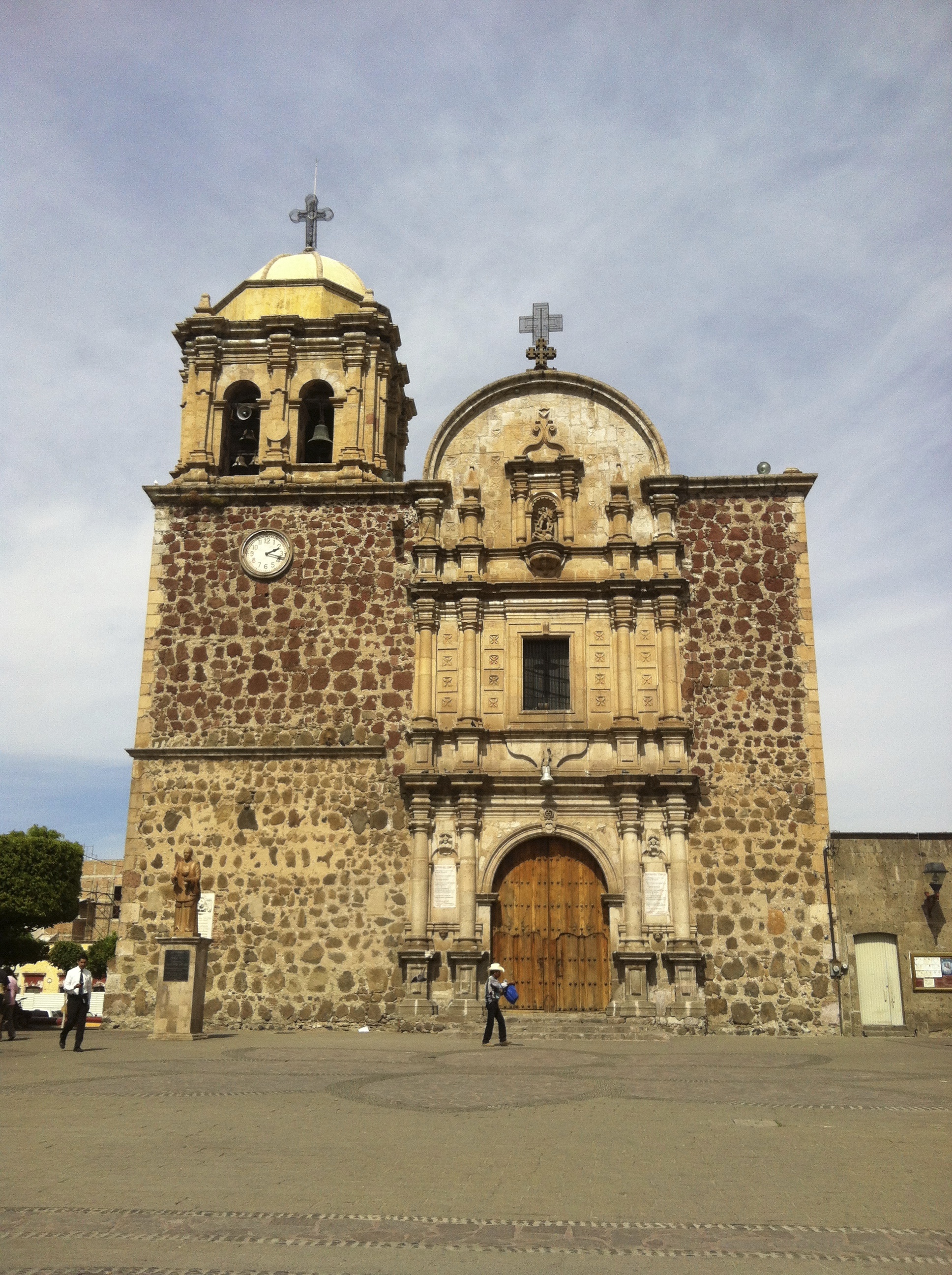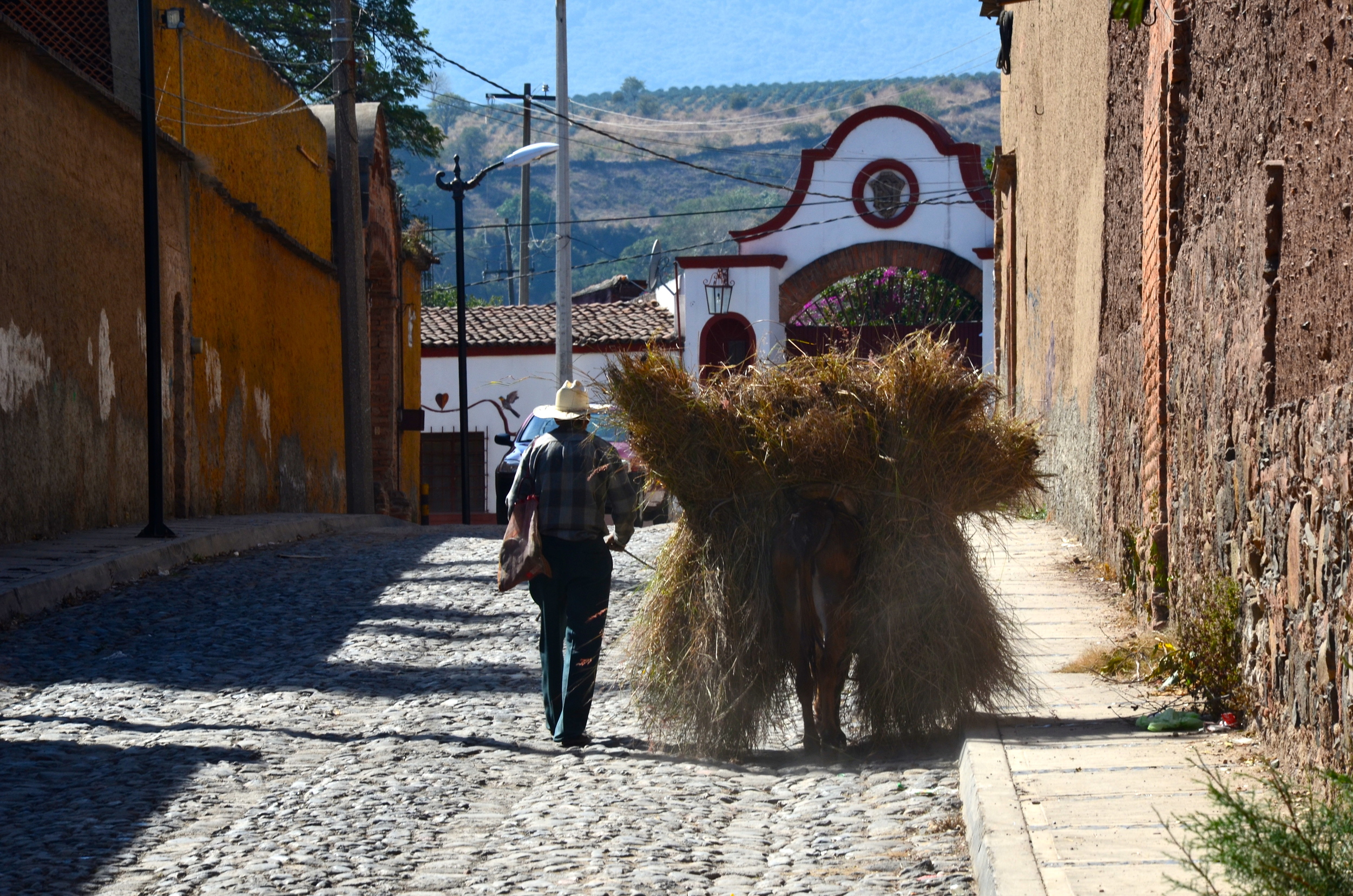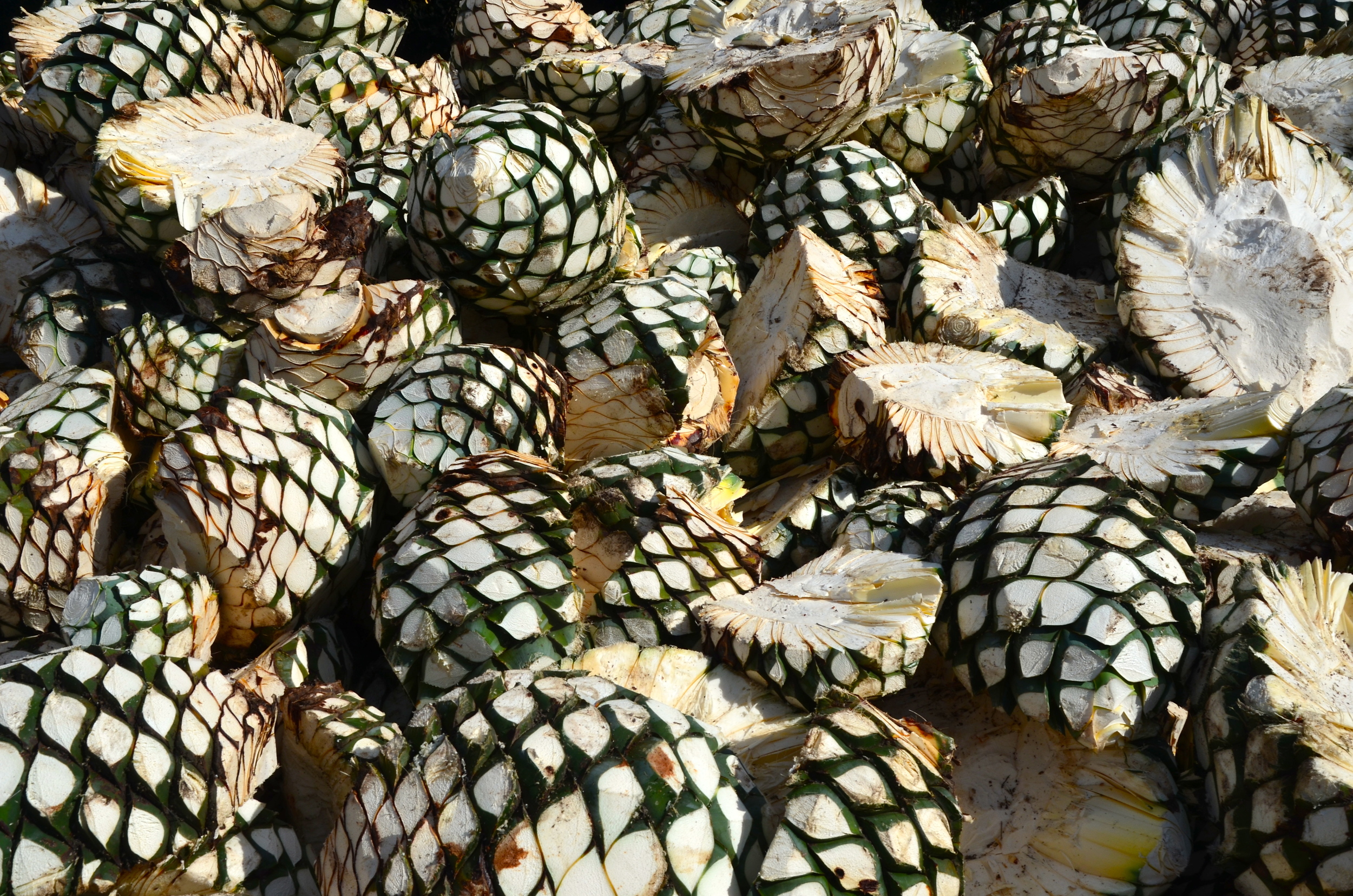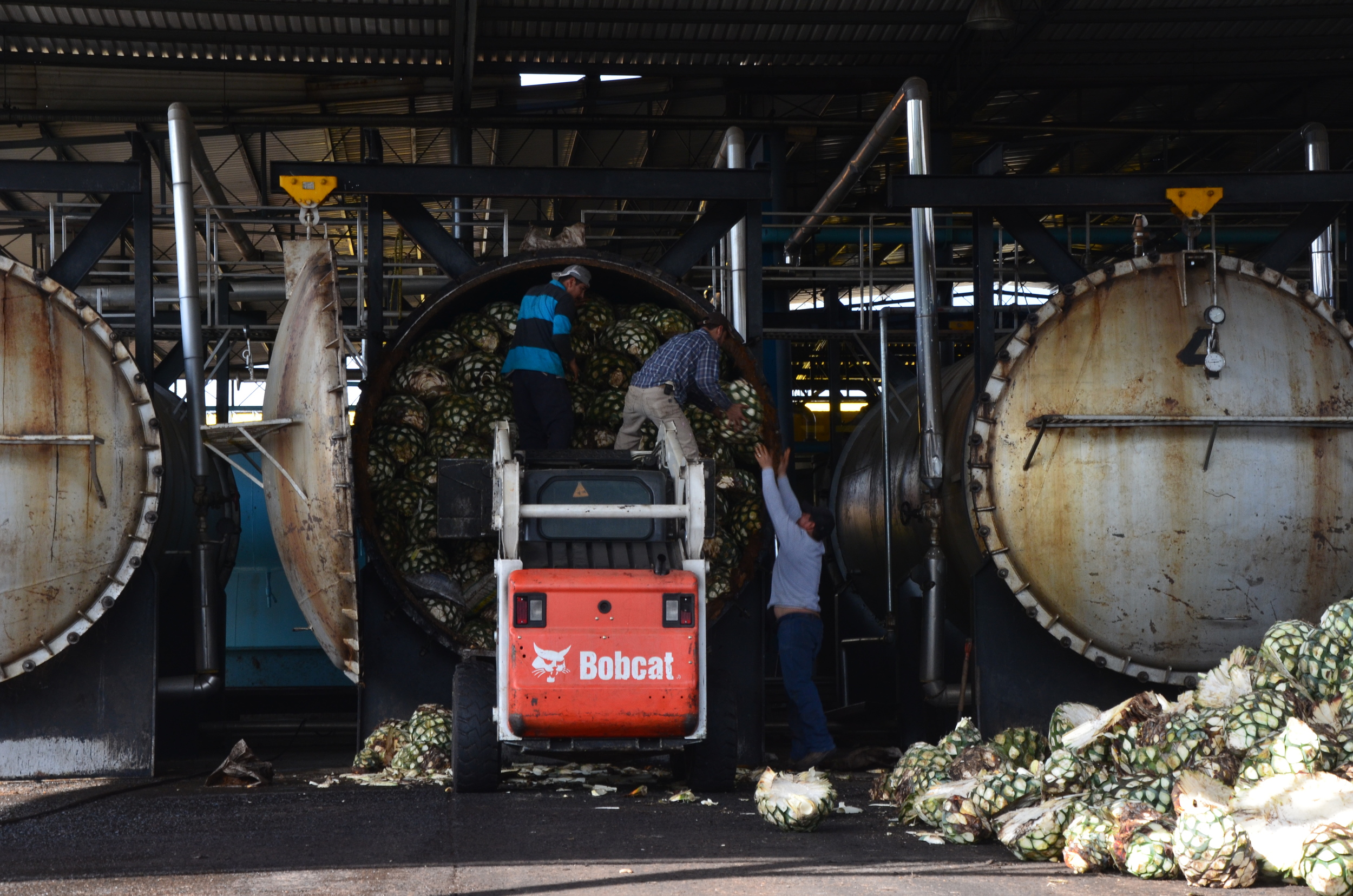Kev and I always welcome meeting and learning all that there is to know from fellow travelers, especially motorcycle travelers. I am always surprised by how some people, as well traveled as they are, push their agendas, discount yours and have problems listening. We were told by a couple of motorcycles not to bother with the town of Tequila. I was looking forward to our trip there and felt disappointed with their negative rendition. Kev and I decided to go anyway. We did not book any accommodations ahead of time and thought that we would just take a look around and decide for ourselves.
We exited the Lake Chapala area and rode the same route that we had taken several days ago to the Guachimontones Pyramids. This route took us around the city of Guadalajara instead of through it. As the blue ocean of agave fields started to appear we knew that we were not too far from the town of Tequila. Our ride through the scrubby green hills to where my eyes met the volcano towering over the ocean of blue agave fields and township of Tequila was in itself enough to question others experiences! As we rode into the busy centro area of Tequila we could see that one night was not going to cut it. We weaved in and out of the clean and dusty cobbled streets of this broom swept town. Not having a destination inputed in Navi I pulled over, only to notice that we were right in front of a hotel I had researched online! How about that! Kev and I were happy with the clean room and secure parking and paid for 2 nights. We unloaded the bikes, hustled out of our riding gear walked back up to the reception desk and asked about a Tequila tour. Now if I was to translate our conversation it would have gone something like this! "Tequila tour?"….."Si"…"Aqui?"…"Si"…."Que hora?"…."dos o tres hora!"…."Bueno"….."cuanto?"….."ciento treinta pesos por persona"….."Bueno"….."Dos personas por tres hora, doscientos sesenta, Si?"….."Si"….."Mucho Gracias!" My spanish is very limited but I was able to choply communicate that we wanted 2 people to go on the 3 o'clock tour and understood that it cost 260 pesos. Kev and I were the only ones on the tour. We had a private translator that rode with us, so everything was very passionately explained to us in spanish, then translated. It was great to be able to pick up bits and pieces as I listened in spanish, then confirm it with the english translation.
Centro
Look at the wonderful handmade ice creams
The simple opened windowed bus drove us a couple of blocks behind where we were staying to the property of the Sauza'a. From the slope of the roadway and height of the bus we were able to peer over the high adobe walls that encased the property like a moat. The Sauza family property was an impressive picture. The beautiful adobe arched hacienda was surrounded by blossoming gardens and set in a sea of blue agave. There was even a miniature scale version of the Golden Gate Bridge, perhaps transporting you across the agave ocean? We continued on the rough cobbly road to where the manufacturing plant was. A worker opened up an opening within the large wooden doors to the plant and immediately the sweet crystal turquoise sea salt, almost spearmint smell of tequila perfumed the air, it was unreal! Now Don Cenobio Sauza was a very important in the town of Tequila. The Sauza family has contributed generously to the township, community and lifestyle of Tequilla. They are much loved, generous and caring with their employees. Sauza will even paint your flaking house for free, as long as they can paint their cherished logo, the rooster, on your building. Now you might be asking "What about Jose?"….Jose Cuervo on the other hand is another subject. Jose, caught up in the capitalism and greed of world enterprise has lost its compassion for the community, so much so that many of the locals do not drink Cuervo! But enough about the Tequila blues …get it?
In the distance is Sauza's
Hacienda Sauza
The Historical area of Tequila…some of the plants are now being restored.
Tequila's historical public Laundromat, so residents did not have to do their laundry in the river. Municipal water lines were installed in the 1940's.
Tequila plant
The whole process starts with the Jimadores hand planting the tiny Blue Weber Agaves in the rich volcanic soil of the area, then eventually harvesting the agave 8 -10 years later. After the 8 -10 years the agave has produced enough honey within its pineapple, or pina and is ready to be harvested. The Jimadores use a selection of traditional tools, that have been used for centuries to cut the stiff fibrous spiky leaves from the bolbas base of the plant where the pineapple has formed. It is hard backbreaking work that is performed with upmost skill. Now the pinas are loaded into trucks to be transported to the distilleries.
Jimadores walking down the streets of Tequila!
We bused on to the Rubio Tequila plant. Here we saw the large pinas, bolbas pineapples that have developed from the base up of a 8 -10 year old agave plant being loaded into a huge pressure cooking oven, autoclave. The distinct raw blue tequila smell saturated the air around us…it was wonderful. We stood only 30 feet away, watching the men carefully arrange, load and manipulate the coarse halved pinas by hand, stuffing and pushing the various sized trophies in the circular space, eventually packing the autoclaves tight. Nearby, trucks packed full of pinas, weighted down by their heavy loads, watched and waited for their turn to unload. The autoclaves will steam cook the pinas transforming their starches into sugar. The now fibrous squishy mixture is loaded onto a conveyor system that squeezes and grinds the pulp fibers and extracts the honey water. The fibers are shot out into an empty truck, ready to be transported away and used as fertilizer, cattle feed, or in local crafts. The agave honey water is now ready to be mixed with a fermentation agent of sugar cane and natural ingredients to produce the alcohol. The old processing would involve having the honey water poured over a sweaty soul standing in a barrel, where the salts and bodily fluids would have acted as the catalyst. Some tequila is still produced this traditional way! We walked along the raised platforms looking into the large stainless steel fermentation barrels. We were encouraged to poke our fingers in and taste the frothy bubbly concoction that was swirling on top…No OSHA here! Once the reaction from the catalyst has subsided the juice is now heated to the alcohols vaporization point, cooled and condensed to create the "ordinario" liquor. In this state the alcohol is dangerous to drink! Our guide said you could be blinded and even die from intoxication!! Mexican law requires that all tequila be distilled twice, for it to be safe to drink, most are distilled 3 or 4 times. So you may be asking how did they know that you could produce an alcohol from the agave plant? Glad you asked! During an electrical storm many moons ago, lightening hit an agave plant and cooked and fermented the pineapple. The native indians of the area woke to a sweet smelling aroma wafting through the air. They followed the smell to the source, tasted the cooked pineapple, figured out how to extract the honey and the rest is history!
Stuffing the autoclaves
A truck waiting to unload
Stuffing dry fibers from the pina's around the autoclave opening to create a tight seal.
The conveyor that grins and squeezes the honey from the cooked pina's.
The fermentation vats…yes we stuck our fingers in there!
The distillation vats
The aging cellar…for the anejo's and reporsado's.
The Tequila Police!




























